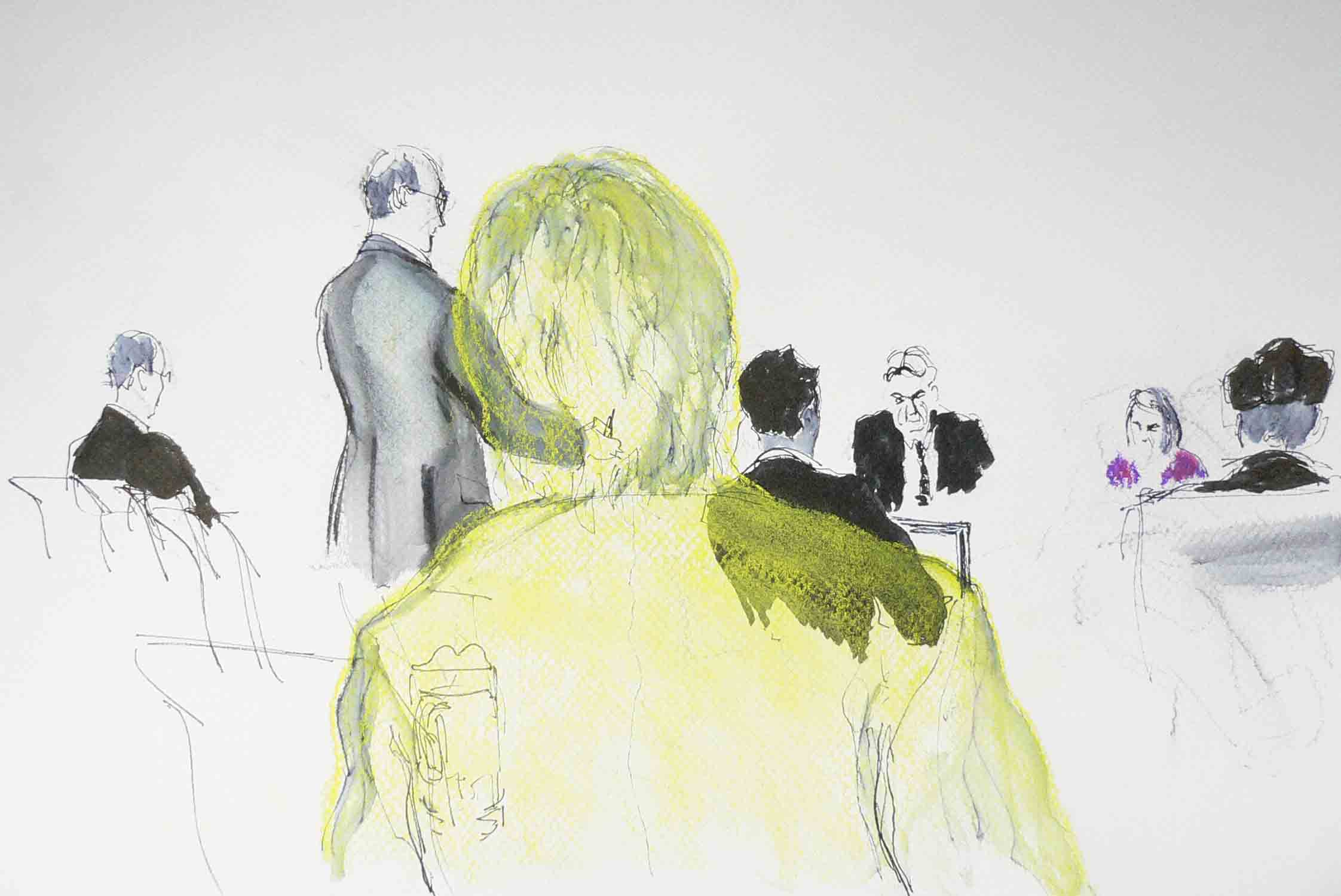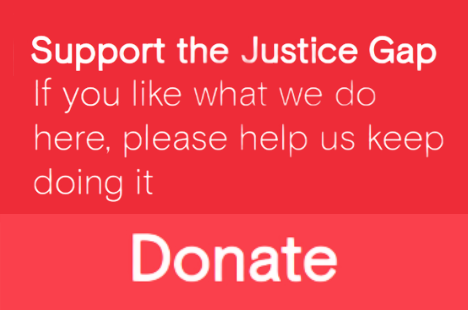[contextly_auto_sidebar id=”iiKZo2m9y8rEz0HMInCC220DDPBg6jyu”]
‘The problem lies with the Court of Appeal. It always did,’ so said Dr Dennis Eady, of Cardiff University Law School’s Innocence Project earlier this month. Eady was one of a number of experts talking to MPs on the House of Commons’ justice committee, as part of its opening session of a new inquiry into the Criminal Cases Review Commission (CCRC).
The miscarriage watchdog hadn’t turned out as originally envisaged by those who campaigned for its establishment, according to Cardiff University’s submission for the committee. Instead, they argued that the CCRC had evolved into ‘a filtering body’ that had simply become ‘an extra barrier’ in the way of the victims of miscarriages of justice. It acted as a ‘re-enforcement of the traditional intransigence of the Court of Appeal’. That frank assessment was co-signed by academics at some 18 universities, as well as campaigners and lawyers.
A year ago the justice committee took oral evidence from the CCRC and in October last year announced an inquiry into its work.
- An earlier, shorter version of this article appeared in Criminal Law & Justice
No safety net
‘It feels as it did almost 20 years ago when we were talking about setting up the commission,’ reflected the Jeremy Corbyn at one point. The Labour MP had championed the likes of the Birmingham Six and Guildford Four before their releases. Would those two cases be treated any differently now? asked his colleague John McDonnell, another Labour MP who also had campaigned to highlight the plight of miscarriages of justice the first time around.
Michael Naughton, founder of the Innocence Network UK, was on hand to point out that Paddy Hill had asked the very same question back in 2006. The then deputy chair of the CCRC, John Weedon apparently conceded that it was ‘unlikely’ that such cases would be referred back to the Court of Appeal post-CCRC.
A year ago the justice committee took oral evidence from the CCRC and in October last year announced an inquiry into its work. The hope from campaigners is that politicians might wake up to the reality of the insurmountable hurdles still faced by the wrongly convicted. So there was some disappointment that only six of the committee’s 12 MPs were in attendance at a session. Apparently, a number of the other MPs were at a session on the Serious Crime Bill.
In a separate later session, two of the original architects of the CCRC were on hand to offer the MPs an historical perspective. ‘The Court of Appeal has always taken the view that they do not want to get involved with jury decisions. They simply wash their hands,’ said Professor Michael Zander, who was on the original Royal Commission which produced its report that led to the establishment of the CCRC. The academic gave evidence alongside its chair Lord Runciman.
Zander said it was ever thus – well, since 1907 when the Court of Criminal Appeal was first set up in the wake of another terrible miscarriage of justice. The academic’s view was that they Appeal judges have ‘always been wrong’.
‘Committee after committee, including ours, have said [the Court of Appeal] were wrong; they have to grasp the nettle. That is their job—it is a safety net job.’
Michael Zander
The academic argued that there was ‘the possibility of a new approach’ as a result of the work of the Justice committee.
A year ago the justice committee took oral evidence from the CCRC and in October last year announced an inquiry into its work. Views as to how the Birmingham-based commission has been doing its job were polarized.
Michael Zander flagged up research by Dr Steven Heaton which found some nine out 10 applications to the CCRC had no prospects of ever being looked at by the CCRC because (in his words) ‘nothing is advanced by way of reasoning—no evidence, no material, nothing to go on’. That left just 10% and, of that number, some 3.5% were referred to the Court of Appeal. The Heaton study focused on 147 such cases where the CCRC did not refer and identified 26 cases where there was concern of a miscarriage of justice. Of that number, Dr Heaton came to the conclusion that the CCRC was absolutely right not to refer them. ‘That is a very important finding in a really serious piece of research,’ Zander said.
Low hanging fruit
It was a view that was at odds with the experience of practitioners on the frontline such as Dennis Eady and Michael Naughton and solicitors Glyn Maddocks and Mark Newby. The committee chair Alan Beith asked their view as to how proactive the CCRC was. The watchdog had apparently claimed to go ‘beyond the bundle’ in one third of its cases. Michael Naughton argued that few, if any, of that number were of the kind looked at by University innocence project. ‘We are typically looking at serious sexual offenses, life sentences and murder,’ he said. He characterized those cases where the CCRC went ‘beyond the bundle’ as ‘low hanging fruit cases’ which helped maintain the CCRC’s 70% ‘success rate’ (i.e., the proportion of referrals being overturned). ‘I believe that they are obsessed with that 70% figure,’ Naughton added.
The lawyers expressed concern at the variability of the quality and approach of case review managers and at a perceived reluctance over meeting applicants. ‘We know of cases that have been with the Commission for over 10 years and they have never even met the applicant,’ said Eady. ‘The reason given – that they do it when ‘necessary’ – is a little bit arrogant. You never know what will come of it.’
‘Austerity came early to us,’ the CCRC chair Richard Foster told MPs last January. Carolyn Hoyle reckoned that the cash-strapped watchdog would need a 20% increase in its budget to ‘take them back to where they should be given the cuts over the years and the increase in cases’.
The Birmingham 26
MPs asked about the erosion of the CCRC’s section 17 powers that gave the body unprecedented powers to force public bodies to release documents and materials. Those powers have been increasingly undermined as those bodies increasingly move into the private sector, notably the Forensic Science Service, probation, parts of the police and health service. ‘It’s is a priority, but what is disturbing is that it has been a priority for so long,’ noted Mark Newby.
Inevitably the discussion turned to the relationship between the CCRC and the Court of Appeal and, in particular, the ‘real possibility’ test – described by the journalist David Jessel as ‘the wicked fairy at the christening of the CCRC’. ‘It set up the CCRC to fail and does the opposite of what it was intended to do,’ said Dennis Eady. ‘What people wanted from the CCRC was an organization that could overcome this resistance of the Court of Appeal.’
The Cardiff submission cited the case of Tony Stock, as featured on www.thejusticegap.com, as ‘symbolizing and demonstrating fundamental problems with the criminal justice system’. The Stock case has gone back to the Court of Appeal on four separate occasions and, until recently, was the only case to have been referred a second time by the Commission back to the Appeal judges.
‘Out of some 15,000 cases that the CCRC has looked in the last 17 years, it has sent only two cases back twice the Court of Appeal – and it probably does that with reluctance and trepidation,’ said Glyn Maddocks, who has represented the Stock family for over 20 years. ‘That isn’t satisfactory.’ The solicitor argued that there was ‘an unequal relationship between the Court of Appeals and the CCRC’. ‘It cannot be said to be independent,’ he added.
Professor Jacqueline Hodgson told MPs that when cases were considered by the CCRC at committee stage there was ‘a wide range of approaches’ including ‘second-guessing’ the Appeal judges. ‘That’s the wrong test,’ she said. ‘The real possibility test actually allows for a real breadth of interpretation.’ The CCRC needed ‘something to nudge it and give it more confidence’. ‘It is not there to be friends with the Court of Appeal,’ she said. ‘It is there to be robust and authoritative.’








